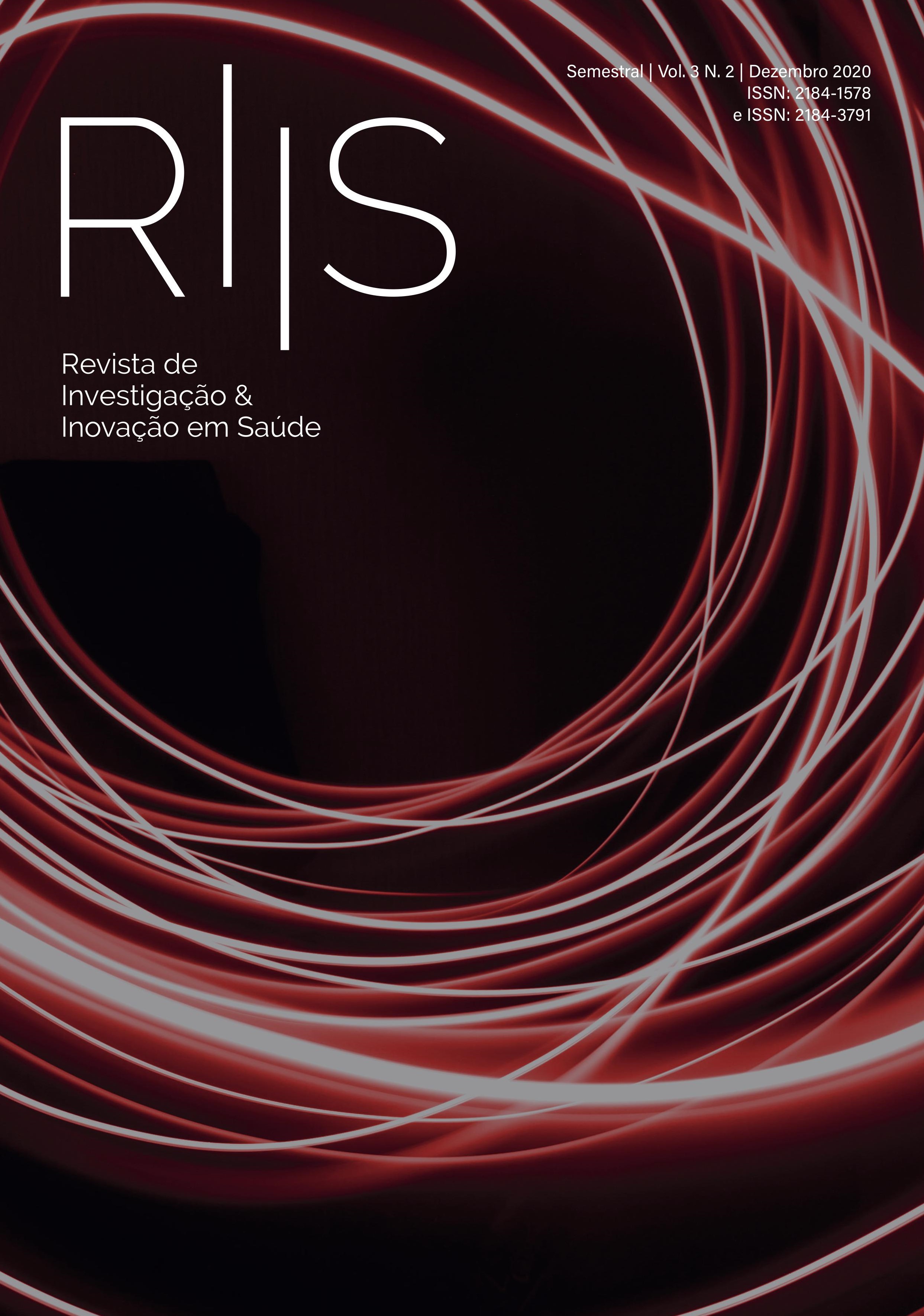The impact of shift work on nurse´shealth: Integrative review
DOI:
https://doi.org/10.37914/riis.v3i2.85Keywords:
shift work schedule; health; nurses; worker’s healthAbstract
Background: nurses' work, due to its nature and content, integrates the physical and emotional dimensions, having amongst other risk factors, exposure to rotate and night shifts. Objective: to assess the impact of shift work on nurses' health. Methodology: in the period from 21st to 28th of February 2020, the authors carried out an integrative literature review in the MEDLINE and CINAHL databases, and selected articles published until February 2020.Articles published in the last 5 years were selected, which portrayed the performance of nurses in a context of shift work and assessed the impact on their health. Results: the main changes detected with shift work in nurses' performance are changes in sleep, mental health, metabolism and job satisfaction. We identified statistically significant relationships (p <0.05) between shift work hours and depression, Burnout, sleep quality, as well as a high prevalence of Shift Work Disorder in nurses. Conclusion: shift work nurses are more likely to experience sleep problems, fatigue, depression and burnout when compared to nurses who have regular daytime shifts.
References
Anbazhagan, S., Ramesh, N., Nisha, C. & Joseph, B. (2016). Shiftwork disorder and related health problems among nurses working in a tertiary care hospital, Bangalore, South India. Indian J Occup Environ Med, 20(1):35–38. doi:10.4103/0019-5278.183842.
Black, D. (2012). Work, health and well-being. Safety Health Work, 4:241-242. doi:10.5491/SHAW.2012.3.4.241.
Camerino, D., Sandri, M., Sartori, S., Conway, M., Campanini, P. & Costa, G. (2010). Shiftwork, work-family conflict among italian nurses and prevention efficacy. Chronobiology International. The Journal of Biological & Medical Rhythm Research, 27(5): 1105-1123. doi:https://doi.org/10.3109/07420528.2010.490072.
Campos, M. & Martino, M. (2004). Aspectos cronobiológicos do ciclo vigília-sono e níveis de ansiedade dos enfermeiros nos diferentes turnos de trabalho. Revista da Escola de Enfermagem da USP, 38(4): 415-421. doi:10.1590/S0080-62342004000400007.
Chin, W., Guo, Y., Hung, Y., Yang, C. & Shiao, J. (2015). Short sleep duration is dose-dependently related to job strain and Burnout in nurses: a cross sectional survey. International Journal of Nursing Studies, 52(1):297-306. doi:10.1016/j.ijnurstu.2014.09.003.
Costa, G. (2003). Factors influencing health of workers and tolerance to shiftwork. Theorical Issues in Ergonomics Science, 4(3-4): 263-288.doi:10.1080/14639220210158880.
Fadeyi, B., Ayoka, A., Fawale, M., Alabi, Q., Oluwadaisi, A. & Omole, J. (2018). Prevalence, predictors and effects of shiftwork sleep disorder among nurses in a Nigerian teaching hospital. Sleep Science Practice, 2 (69). doi:10.1186/s41606-018-0027-x.
Flo, E., Pallesen, S., Magerøy, N., Moen, B. E., Grønli, J., HildeNordhus, I., … Bjorvatn, B. (2012). Shiftwork disorder in nurses-assessment, prevalence and related health problems. PLoSOne, 7(4):e33981. doi:10.1371/journal.pone.0033981
Giorgi, F., Mattei, A., Notarnicola, I., Petrucci, C. & Lancia, L. (2018). Can sleep quality and burnout affect the job performance ofshift-worknurses? A hospital cross-sectional study. J Adv Nurs, 74: 698-708. doi:10,1111 / jan.13484.
Hall, A., Franche, R. & Koehoorn, M. (2018). Examining exposure assessment in shiftwork research: a study on depression among nurses. Annals of Work Exposures and Health, 62 (2). doi:10.1093/annweh/wxx103.
International classification of sleep disorders, revised: diagnostic and coding manual (ICSD-2). (2005). Westchester, IL: American Academy of Sleep Medicine.
Jaradat, Y., Nielsen, M., Kristensen, P. & Bast-Pettersen, R. (2017). Shiftwork, mental distress and job satisfaction among Palestinian nurses. Occupational Medicine, 67: 71-74. doi:10.1093/occmed/kqw128.
Knutsson, A. (2003). Health disorders of shiftworkers. Occupational Medicine, 53:103-108. doi:10.1093/occmed/kqg048.
Lamont, S., Brunero, S., Perry, L., Duffield, C., Sibbritt, D., Gallagher, R. & Nicholls, R. (2017). ‘Mental healthday’ sickness absence amongst nurses and midwives: Workplace, workforce, psychosocial and health characteristics. Journal of Advanced Nursing, 73(5), 1172-1181. doi:https://doi.org/10.1111/jan.13212.
Murofuse, N., Abranches, S. & Napoleão, A. (2005). Reflexões sobre estresse e burnout e a relação com a enfermagem. Revista Latino-Americana de Enfermagem, 13(2):255-261. doi:https://doi.org/10.1590/S0104-11692005000200019.
O’Donnell, S., Vanderloo, S., McRae, L., Onysko, J., Patten, S. & Pelletier, L. (2016). Comparison of the estimated prevalence of mood and/or anxiety disorders in Canada between self-report and administrative data. Epidemiol Psychiatr Sci, 25: 360-9. doi:10.1017/S2045796015000463
Ruggiero J. (2003). Correlates of fatigue in critical care nurses. Research in Nursing & Health, 26:434–444. doi:10.1002/nur.10106.
Quinlan, M., Mayhew, C. & Bohle, P. (2001). The global expansion of precarious employment, work disorganization, and consequences for occupational health: a review of recent research. International Journal of Health Services, 31: 335–414. doi:10.2190/607H-TTV0-QCN6-YLT4.
Rebelo, A. (2013). O burnout nos profissionais de equipas multidisciplinares de apoio à medida do Rendimento Social de Inserção, no distrito da Guarda (Master’ thesis, Universidade Católica Portuguesa). Disponível em:https://repositorio.ucp.pt/bitstream/10400.14/13616/1/Tese%20Helena_Rebelo.pdf.
Rossler, W. (2012). Stress, Burnout, and job dissatisfaction in mental healthworkers. European Archives of Psychiatry and Clinical Neuroscience, 262(2): 65-69. doi:10.1007/s00406-012-0353-4.
Ruggiero J. (2003). Correlates of fatigue in critical care nurses. Research in Nursing & Health, 26: 434–444. doi:10.1002/nur.10106.
Santos, R. (2015). Bournout: um estudo em profissionais de saúde (Master’ thesis, Instituto Politécnico de Setúbal). Disponível em: https://comum.rcaap.pt/bitstream/10400.26/10513/1/Disserta%C3%A7%C3%A3o%20de%20mestrado_RebeccaSantos.pdf
Scott, A., Monk, T. & Brink, L. (1997). Shiftwork as a riskfactor for depression: a pilot study. International Journal of Occupational and Environmental Health, 3(2):S2-S9. ISSN:1077-3525
Silva, I., Prata, J. & Ferreira, A. (2014). Horário de trabalho por turnos: da avaliação dos efeitos às possibilidades de intervenção. International Journal on Working Conditions, 7:69-82. ISSN 2182-9535.
Slim, K., Nini, E., Forestier, D., Kwiatkowski, F., Panis, Y. & Chipponi, J. (2003). Methodological index for non-randomized studies (minors): development and validation of a new instrument. ANZ Journal of Surgery, 73(9): 712–716. doi:10.1046/j.1445-2197.2003.02748.x.
South African Department of Health. (2003). OH services for health care workers in the national health service of South Africa. A Guideline Booklet, 1-72.
Spiegel, U., Gonene, L. & Weber, M. (2014). Duration and optimal number of shifts in the labour market. Applied Economics Letters, 21(6):429-432. doi:10.1080/13504851.2013.864027.
Totterdell, P. (2005). Workschedules. In: Barling J, Kelloway E, Frone M. Handbookofwork stress. Thousand Oaks: SAGE Publications. doi:10.4135/9781412975995.n3.
Trbojević-Stanković, J., Stojimirović, B., Soldatović, I.,Petrović, D., Nesić, D. & Simić, S. (2015). Continuing nursing education. Work-relatedfactors as predictors of Burnout in serbian nurses working in hemodialysis. Nephrology Nursing Journal, 42:553-562.
Vidotti, V., Ribeiro, R., Galdino, M. & Martins, J. (2018). Síndrome de burnout e o trabalho em turnos na equipe de enfermagem. Revista Latino Americana de Enfermagem, 26. doi:10.1590/1518-8345.2550.3022.
Weishan, C., Yue Leon, G., Yu-Ju, H., Chiu-Yueh, Y. & Judith, S. (2014). Short sleep duration is dose-dependently related to job strain and burnout in nurses: A cross sectional survey. International Journal of Nursing Studies, 52(1), 297-306. doi:https://doi.org/10.1016/j.ijnurstu. 2014.09.003.
Woo, J. & Postolache, T. (2008). The impact of work environment on mood disorders and suicide: evidence and implications. International Journal on Disability and Human Development, 7(2): 185-200. doi:10.1515/ijdhd.2008.7.2.185.
World Health Organization. (2017). Depression and other Common Mental Disorders. Global Health Estimates. Geneve: World Health Organization.
Downloads
Published
How to Cite
Issue
Section
License
Copyright (c) 2020 Journal of Health Research & Innovation

This work is licensed under a Creative Commons Attribution 4.0 International License.















